
Bab El Bhar: The Gateway to Tunisian History and Culture
Discover Bab El Bhar, the historic gateway to Tunis, where ancient traditions meet modern vibrancy in a labyrinth of culture, commerce, and captivating sights.
Bab El Bhar, also known as the 'Sea Gate,' serves as an iconic entrance to the heart of Tunis. This historical neighbourhood is a living museum, blending the old with the new, where ancient walls whisper tales of the past and modern shops buzz with contemporary life. The grand archway, which translates to 'Gate of the Sea,' marks the beginning of the Medina of Tunis, a UNESCO World Heritage Site. As you pass through this historic gate, you'll find yourself enveloped in a labyrinth of narrow alleys and bustling souks. The aroma of spices, the vibrant colours of textiles, and the sounds of merchants haggling create a sensory feast. Each twist and turn reveals hidden gems, from ancient mosques and palaces to quaint cafes and artisanal shops. The bustling markets offer a treasure trove of handmade crafts, traditional garments, and exotic foods, making it a shopper's paradise. Beyond its commercial appeal, Bab El Bhar is also a cultural hub. The area is dotted with museums and cultural centers that showcase Tunisia's rich history and diverse heritage. Whether you're a history buff, a shopaholic, or simply a curious traveler, Bab El Bhar offers a unique and enriching experience that captures the essence of Tunisian life.
Local tips in Bab El Bhar
- Visit in the morning to avoid the afternoon heat and experience the markets at their liveliest.
- Wear comfortable shoes as you'll be walking on uneven cobblestone streets.
- Don't be afraid to haggle in the souks; it's part of the local culture.
- Make time to visit the nearby Medina of Tunis for a deeper dive into the local history and architecture.
- Keep small change handy for purchasing snacks and small items from street vendors.
Bab El Bhar: The Gateway to Tunisian History and Culture
Bab El Bhar, also known as the 'Sea Gate,' serves as an iconic entrance to the heart of Tunis. This historical neighbourhood is a living museum, blending the old with the new, where ancient walls whisper tales of the past and modern shops buzz with contemporary life. The grand archway, which translates to 'Gate of the Sea,' marks the beginning of the Medina of Tunis, a UNESCO World Heritage Site. As you pass through this historic gate, you'll find yourself enveloped in a labyrinth of narrow alleys and bustling souks. The aroma of spices, the vibrant colours of textiles, and the sounds of merchants haggling create a sensory feast. Each twist and turn reveals hidden gems, from ancient mosques and palaces to quaint cafes and artisanal shops. The bustling markets offer a treasure trove of handmade crafts, traditional garments, and exotic foods, making it a shopper's paradise. Beyond its commercial appeal, Bab El Bhar is also a cultural hub. The area is dotted with museums and cultural centers that showcase Tunisia's rich history and diverse heritage. Whether you're a history buff, a shopaholic, or simply a curious traveler, Bab El Bhar offers a unique and enriching experience that captures the essence of Tunisian life.
Iconic landmarks you can’t miss
Bab al-Bhar
Discover the vibrant history of Bab al-Bhar, an iconic gateway to Tunis that blends rich culture, stunning architecture, and lively street life.

Avenue Habib Bourguiba Clocktower
Discover the Avenue Habib Bourguiba Clocktower, a historic landmark in Tunis that blends culture, architecture, and vibrant street life in one captivating location.
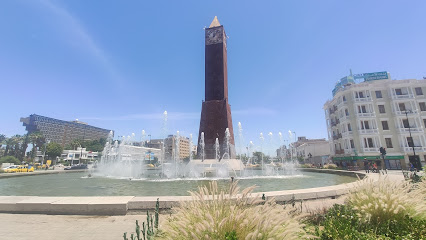
Victory Square
Experience the vibrant culture and rich history of Tunisia at Victory Square, a hub for locals and tourists alike, surrounded by delicious food and stunning architecture.
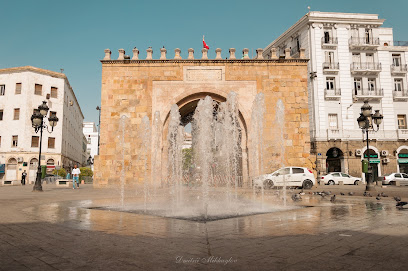
Kasbah Square
Explore the historical charm of Kasbah Square, a vibrant hub of Tunisian culture and history in the heart of Tunis.
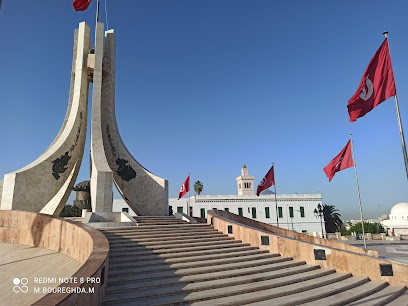
Memorial to President Habib Bourguiba Victory Day Monument
Explore Tunisia's rich history at the Memorial to President Habib Bourguiba, a monumental tribute to independence and leadership.
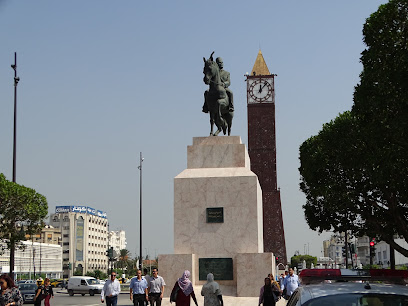
Les toits de la médina Tunis
Discover the historical allure of Les Toits de la Médina Tunis, where stunning architecture meets vibrant local culture in an unforgettable experience.
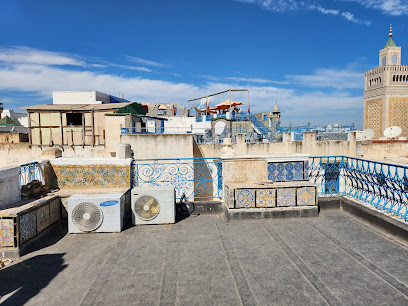
Royal Mausoleum of Tourbet el Bey
Discover the Royal Mausoleum of Tourbet el Bey, a stunning blend of history and architecture in the heart of Tunis, perfect for cultural enthusiasts.
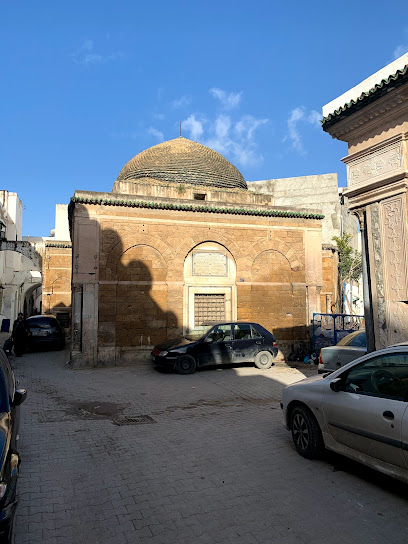
La Médina Antique De Tunis
Discover the rich heritage and vibrant culture of La Médina Antique De Tunis, a UNESCO World Heritage site showcasing exquisite architecture and local traditions.
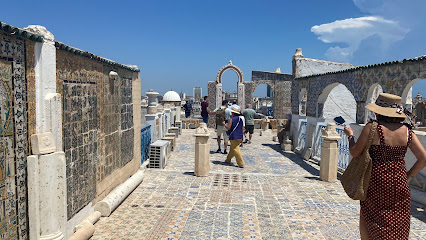
Dar El Haddad
Discover the historical allure of Dar El Haddad, a captivating landmark in Tunis showcasing rich culture and vibrant local events.
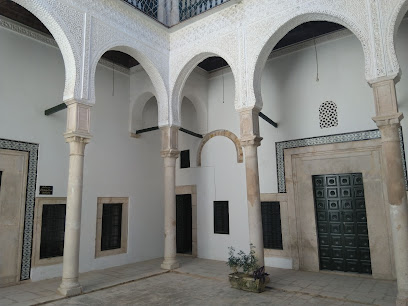
Bab elbahr
Explore Bab Elbahr, a historical landmark in Tunis, where architectural beauty meets rich cultural heritage, offering stunning views of the Mediterranean.

Unmissable attractions to see
14th January Square
Discover the vibrant 14th January Square in Tunis, a historic hub of culture, politics, and community life.
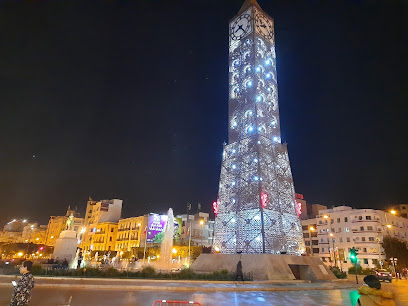
Dar Lasram
Discover the rich history and stunning architecture of Dar Lasram, a captivating museum and historical landmark in the heart of Tunis.
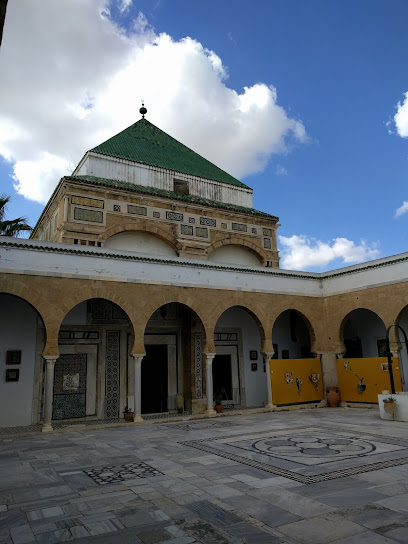
شارع الحبيب بورقيبة
Discover the vibrant heart of Tunis on Avenue Habib Bourguiba, where history meets modernity in a lively atmosphere.
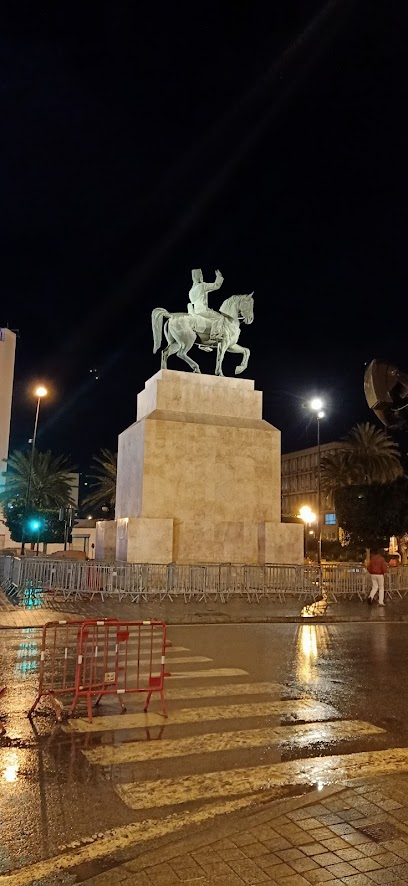
Dar Othman
Explore the enchanting Dar Othman in Tunis, a historical gem showcasing traditional architecture and the rich culture of Tunisia.
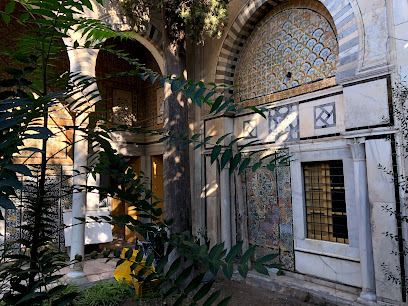
Corniche du Lac I
Explore the stunning landscapes and serene ambiance of Corniche du Lac I, a tranquil escape in Tunis perfect for relaxation and leisurely strolls.
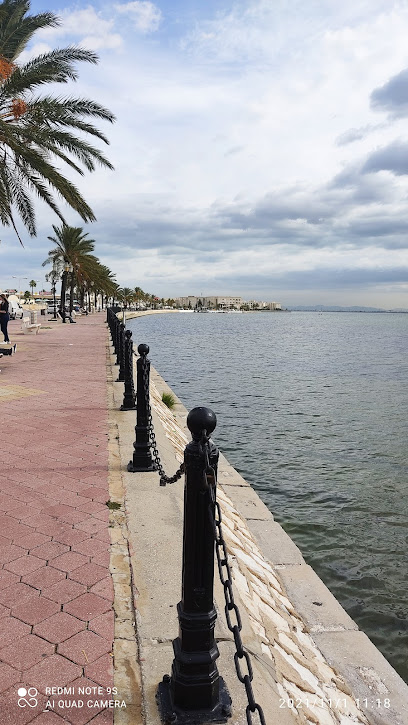
Bab Souika
Explore Bab Souika, a vibrant Tunisian neighborhood filled with rich culture, artisan shops, and delicious local cuisine, perfect for an authentic experience.
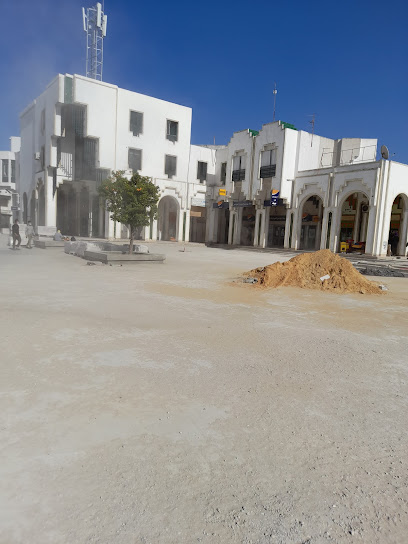
Kasbah Square
Discover the vibrant heart of Tunis at Kasbah Square, where history meets culture in a lively atmosphere filled with art, markets, and beautiful architecture.
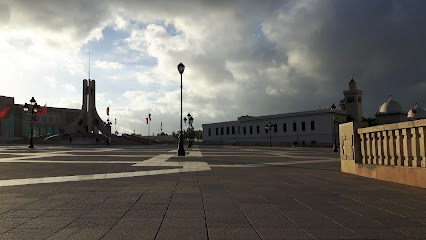
The Roofs of Tunis
Explore the captivating rooftops of Tunis, where history, culture, and breathtaking views come together in a unique travel experience.
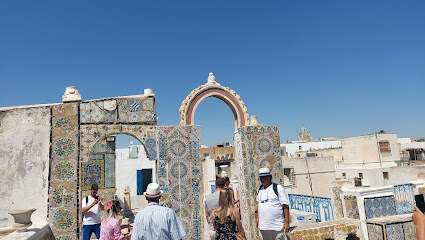
BenSalem brothers
Discover the unique charm of BenSalem Brothers in Tunis, where local craftsmanship meets vibrant cultural heritage in the heart of the Souk Attarine.
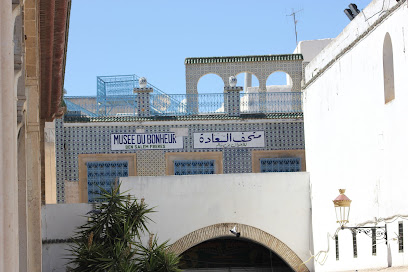
ساحة رمضان باي
Experience the rich culture and vibrant atmosphere of Place Ramadhan Bey, a must-visit attraction in the heart of Tunis, Tunisia.
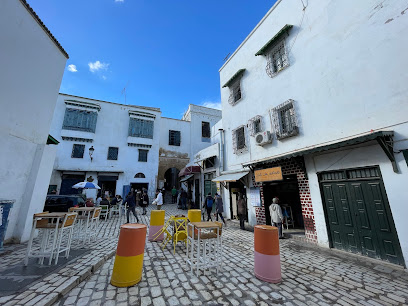
Terrasse avec vue panoramique
Discover breathtaking views of Tunis from the Terrasse avec vue panoramique, where history meets stunning landscapes in a serene setting.
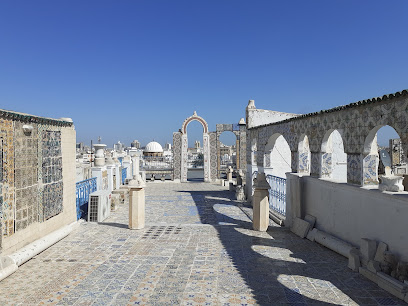
Essential places to dine
Restaurant of People
Experience authentic Tunisian cuisine at Restaurant of People in La Medina, where every dish tells a story.
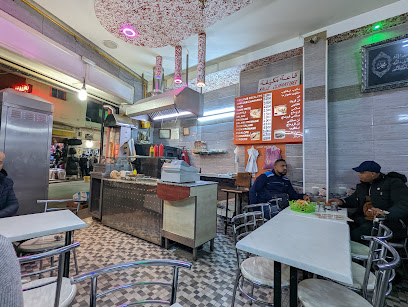
Bab Tounès
Savor the essence of Tunisia at Bab Tounès - a delightful dining experience in La Medina.
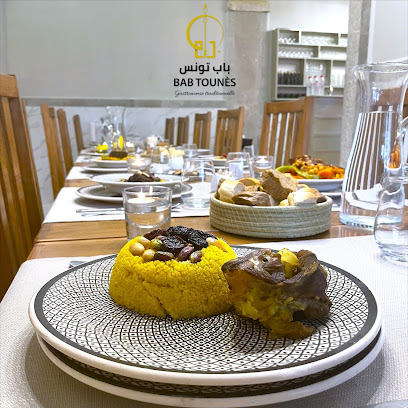
Steak Haus
Discover the ultimate steak experience at Steak Haus in Tunis – where quality meets tradition and every bite tells a story.
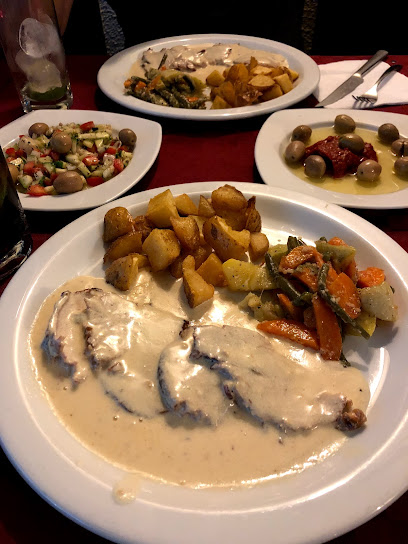
Mon café
Experience authentic Tunisian flavors at Mon Café in Bab Bhar – a charming restaurant showcasing local culinary delights.
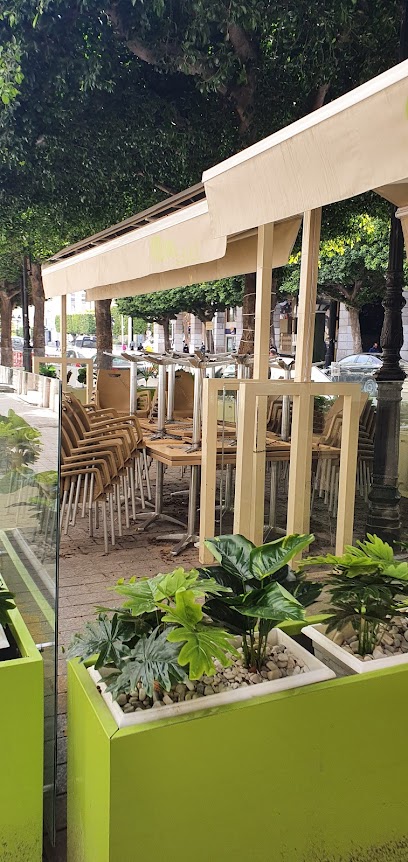
Restaurant Baparonne
Experience authentic Tunisian flavors at Restaurant Baparonne in Bab Bhar, where tradition meets taste in every dish.

صحن ثوم
Discover authentic Tunisian fast food at صحن ثوم in Bab Bhar – where tradition meets convenience for every traveler.
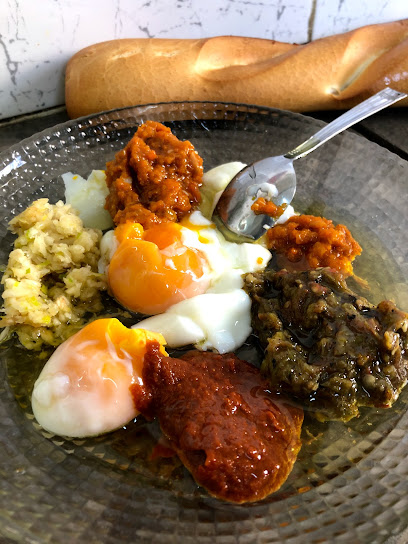
Restaurant El Kalaã Food
Discover authentic Tunisian cuisine at Restaurant El Kalaã Food in Bab Bhar, Tunis – where tradition meets flavor.
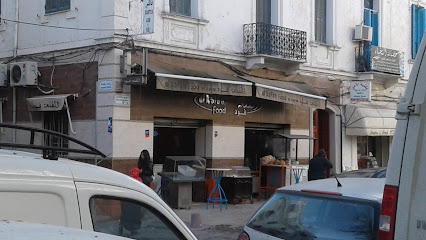
مطعم ولد العروسي
Discover authentic Tunisian flavors at مطعم ولد العروسي in Bab Bhar - a culinary gem offering delicious traditional dishes.
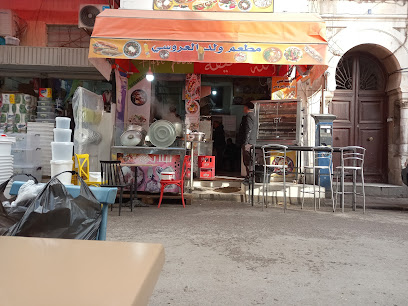
Oliviera
Discover culinary excellence at Oliviera in Tunis – where traditional flavors meet modern dining experiences.
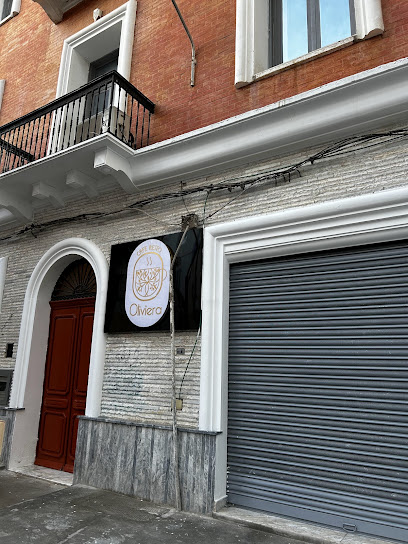
Machwi
Experience authentic Tunisian cuisine at Machwi - where tradition meets modernity in every delicious dish.
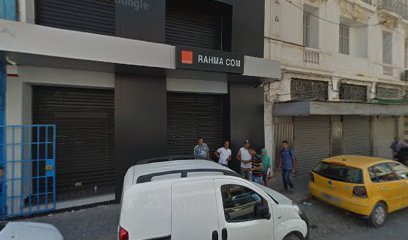
Markets, malls and hidden boutiques
Kpop Shop Tunisia
Discover the heart of K-Pop culture at Kpop Shop Tunisia, offering exclusive merchandise and a vibrant community for fans.

Muslim shop downtown
Discover local crafts, textiles, and delicacies at the vibrant Muslim shop downtown in Tunis, a cultural shopping experience like no other.
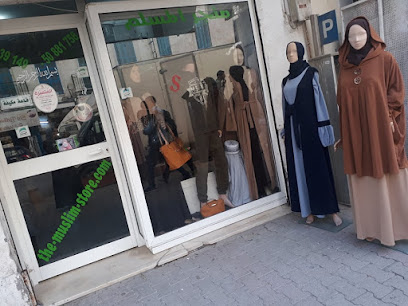
BLACK HAZE Collection
Discover unique contemporary fashion at BLACK HAZE Collection, a premier clothing store in Abdennacer, blending local culture with modern trends.

Miracle
Explore Miracle, the ultimate destination for authentic Tunisian handicrafts and unique gifts that embody the spirit of Tunisia.
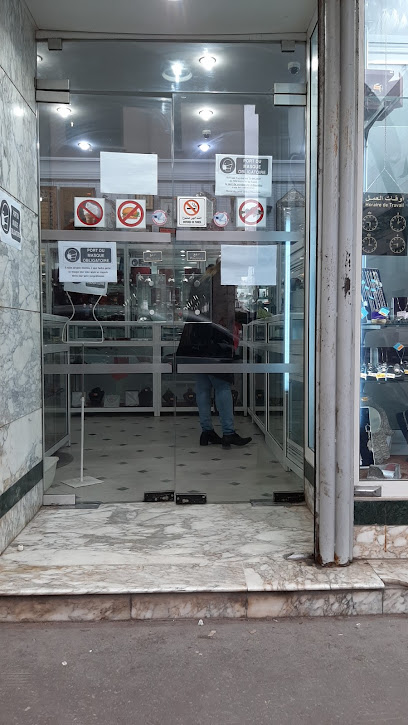
Flora Artisanat
Discover unique handmade treasures at Flora Artisanat in the heart of Tunis, where tradition meets craftsmanship for unforgettable souvenirs.
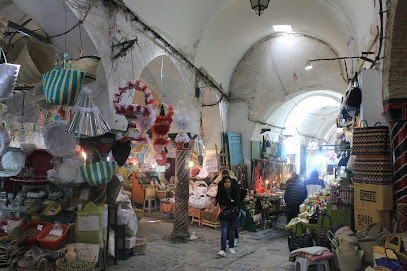
dar el farh
Explore Dar El Farh in Tunis for unique gifts that embody the rich culture and craftsmanship of Tunisia.
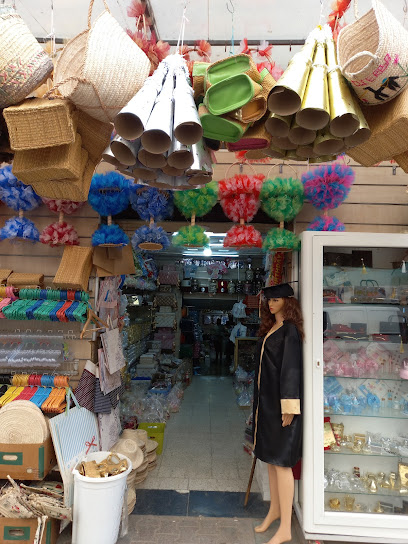
Boutique Mydou
Explore Boutique Mydou in Tunis for unique, stylish children's clothing that blends quality with local charm, perfect for your little fashionistas.
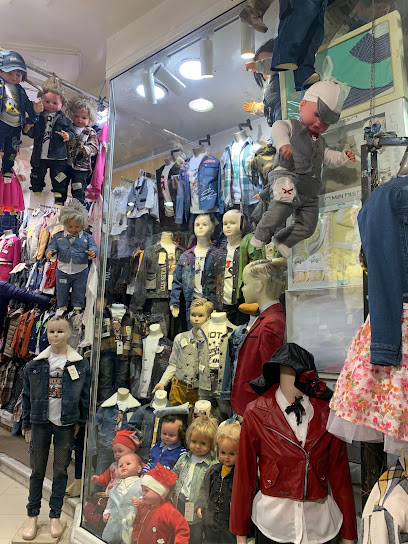
عطار خير
Explore عطار خير, a charming gift shop in Tunis offering authentic souvenirs and local crafts that embody the spirit of Tunisia.

Wood Products Gift Shop
Explore the artistry of Tunisian craftsmanship at the Wood Products Gift Shop, where unique wooden treasures await every visitor.
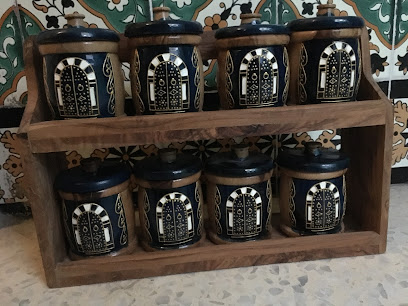
BAB Mnara Art
Explore BAB Mnara Art, a delightful gift shop in La Medina, offering unique handmade Tunisian crafts and artworks that capture the local culture.
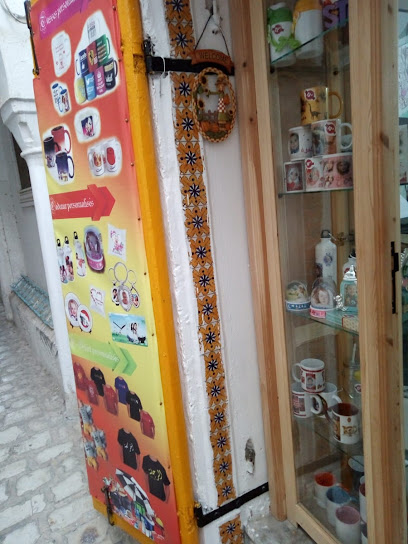
Essential bars & hidden hideouts
Le Baron
Immerse yourself in the lively atmosphere of Le Baron, a vibrant bar in Tunis offering a diverse drink menu and unforgettable nightlife experiences.
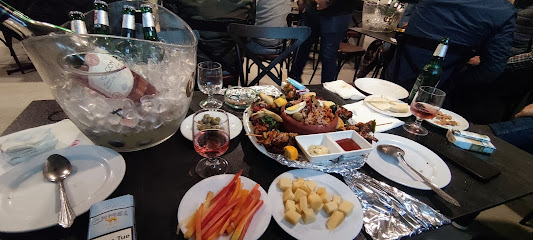
Jfk
Experience the vibrant nightlife of Tunis at Jfk, a lively bar offering a wide selection of drinks and a welcoming atmosphere for all.

Bar L'Avenue
Experience the vibrant atmosphere of Bar L'Avenue in Tunis, where traditional drinks and local charm come together to create unforgettable nightlife.
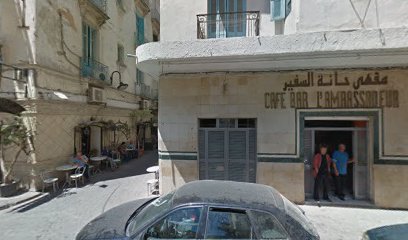
Bar El Mestiri
Discover the essence of Tunisian culture at Bar El Mestiri, a cozy bar in the heart of Tunis offering delightful drinks and a vibrant ambiance.
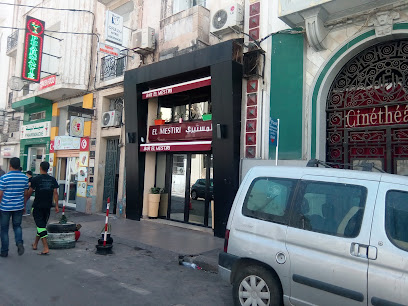
Bar L'oriental
Experience the vibrant atmosphere of Bar L'oriental in Tunis, where delightful drinks meet local charm and culture.
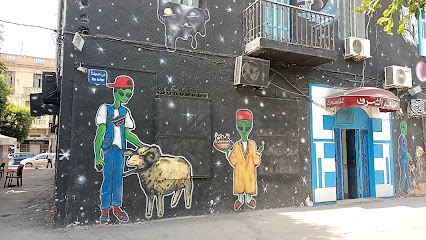
Chez l'ami bar
Discover the vibrant energy of Chez l'ami Bar in Tunis, where local flavors and a friendly atmosphere await every visitor.
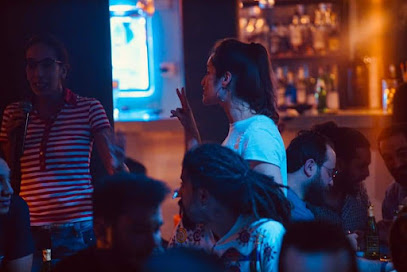
Le Vieux Port
Experience the vibrant atmosphere of Le Vieux Port, a charming bar in Tunis where local culture and stunning views come together for an unforgettable outing.
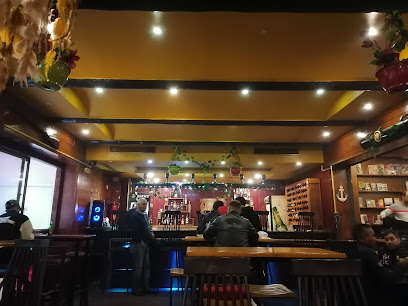
Bar le Palace
Discover the lively ambiance of Bar le Palace in Tunis, a local favorite for drinks and vibrant nightlife that embodies the spirit of the city.
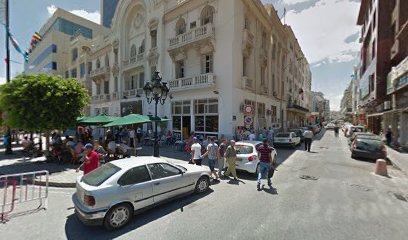
1900 | Speakeasy
Experience the charm of the speakeasy era at 1900 Speakeasy, a hidden bar in Tunis serving exquisite cocktails in an intimate setting.

بااااار
Discover the vibrant nightlife of Tunis at بااااار, where memorable drinks and lively atmosphere await every visitor.
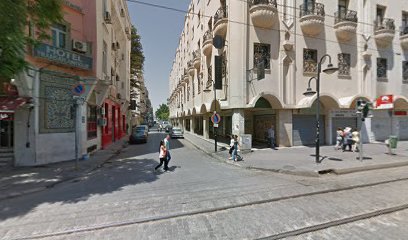
Local Phrases
-
- Helloمرحبا
[marhaba] - Goodbyeوداعا
[wadaan] - Yesنعم
[naam] - Noلا
[laa] - Please/You're welcomeمن فضلك
[min fadlik] - Thank youشكرا
[shukran] - Excuse me/Sorryعذرا
[aadhira] - How are you?كيف حالك؟
[kayf halik?] - Fine. And you?بخير. وأنت؟
[bikhayr. wa ant?] - Do you speak English?هل تتحدث الإنجليزية؟
[hal tatahadath al'injlizia?] - I don't understandلا أفهم
[la afham]
- Helloمرحبا
-
- I'd like to see the menu, pleaseأريد أن أرى القائمة، من فضلك
[urid an ara alqaima, min fadlik] - I don't eat meatأنا لا آكل اللحم
[ana la aakul allahm] - Cheers!في صحتك!
[fi sahtak!] - I would like to pay, pleaseأريد أن أدفع، من فضلك
[urid an adfaa, min fadlik]
- I'd like to see the menu, pleaseأريد أن أرى القائمة، من فضلك
-
- Help!مساعدة!
[musaada!] - Go away!اتركني!
[itrkini!] - Call the Police!اتصل بالشرطة!
[itassil bialshurta!] - Call a doctor!اتصل بطبيب!
[itassil bitabib!] - I'm lostلقد ضللت الطريق
[laqad dalalt altariq] - I'm illأنا مريض
[ana mareed]
- Help!مساعدة!
-
- I'd like to buy...أريد أن أشتري...
[urid an ashtari...] - I'm just lookingأنا فقط أتفرج
[ana faqat atfarrag] - How much is it?كم ثمنه؟
[kam thamanuh?] - That's too expensiveهذا غالي جدا
[hatha ghali jiddan] - Can you lower the price?هل يمكنك خفض السعر؟
[hal yumkinuk khaif alsiar?]
- I'd like to buy...أريد أن أشتري...
-
- What time is it?كم الساعة؟
[kam alssaa?] - It's one o'clockالساعة الواحدة
[alssaa alwahida] - Half past (10)العاشرة والنصف
[alaaashira walnisf] - Morningالصباح
[alssabah] - Afternoonالظهر
[aldhuhur] - Eveningالمساء
[almasa] - Yesterdayأمس
[ams] - Todayاليوم
[alyawm] - Tomorrowغدا
[ghadan] - 1واحد
[wahid] - 2اثنين
[ithnayn] - 3ثلاثة
[thalatha] - 4أربعة
[arba'a] - 5خمسة
[khamsa] - 6ستة
[sitta] - 7سبعة
[saba'a] - 8ثمانية
[thamaneya] - 9تسعة
[tasea] - 10عشرة
[ashara]
- What time is it?كم الساعة؟
-
- Where's a/the...?أين...؟
[ayna...?] - What's the address?ما هو العنوان؟
[ma huwa al'anaan?] - Can you show me (on the map)?هل يمكنك أن تريني (على الخريطة)؟
[hal yumkinuk an tarini (ala alkhariita)?] - When's the next (bus)?متى الحافلة القادمة؟
[mata alhafilat alqadima?] - A ticket (to ....)تذكرة (إلى ...)
[tazkirat (ila ...)]
- Where's a/the...?أين...؟
History of Bab El Bhar
-
Bab El Bhar, translating to 'Gate of the Sea,' serves as one of the historic entrances to the medina of Tunis. Established during the 9th century, this neighborhood developed significantly under the Aghlabid dynasty, which aimed to fortify the city against maritime threats. Its strategic location along the Mediterranean coast facilitated trade and cultural exchanges, making it a vital hub in the region.
-
During the Ottoman period from the 16th to the 19th centuries, Bab El Bhar underwent considerable transformation. The neighborhood became a melting pot of cultures, with the Ottomans introducing new architectural styles, including the distinctive 'Dar' houses characterized by their intricate tile work and ornate facades. The iconic Bab El Bhar gate itself was renovated, symbolizing the power and prestige of Tunis during this era.
-
The French protectorate established in 1881 brought significant changes to Bab El Bhar. The area saw a rise in commercial activities due to the influx of European commerce and investment. The construction of new infrastructure, including the Avenue Habib Bourguiba, marked the transition of Bab El Bhar into a modern urban center, although this came with the challenges of colonial exploitation and social upheaval.
-
Post-independence in 1956, Bab El Bhar emerged as a center for cultural and political activities in Tunisia. The neighborhood played a pivotal role during the Tunisian Revolution of 2011, with its streets becoming a site of protests advocating for social justice and democratic reforms. Today, Bab El Bhar retains its significance as a vibrant cultural zone, combining historical heritage with contemporary life, hosting markets, cafes, and artistic events.
-
Efforts to preserve the historical and architectural integrity of Bab El Bhar are ongoing, reflecting a broader commitment to safeguarding Tunis's rich heritage. The neighborhood's significance has garnered attention from various cultural organizations, and it is increasingly recognized as a vital part of Tunisia’s identity, attracting both local and international tourists eager to explore its historical depths.
Bab El Bhar Essentials
-
Bab El Bhar is easily accessible from other neighborhoods in Tunis. If you are coming from the city center, you can take the Metro (Line 1) to the Bab El Bhar station. Buses and taxis are also readily available throughout the city; ensure to choose licensed taxis for safety. The main train station, Tunis Marine, is a short taxi ride away if you are arriving by train from other Tunisian cities.
-
Bab El Bhar is a walkable neighborhood, and many attractions are within easy reach. Public transport options include the Metro and buses, which connect you to other parts of Tunis. Taxis are plentiful, and it’s common to share rides with other passengers. For a more unique experience, consider renting a bicycle to explore the area at your own pace.
-
Bab El Bhar is generally safe for tourists, but like any urban area, it's wise to stay alert. Avoid poorly lit streets at night and keep your belongings secure. Areas surrounding the medina can be crowded, so be cautious of pickpockets. While violent crime is rare, stay vigilant in busy tourist spots.
-
In case of an emergency, dial 190 for police assistance or 190 for medical emergencies. Local hospitals and clinics are available, and pharmacies can be found throughout the neighborhood for minor health issues. It’s advisable to have travel insurance that covers medical emergencies.
-
Fashion: Do dress modestly, particularly in religious sites. Avoid revealing clothing. Religion: Do respect local customs, and if visiting mosques, cover your head and shoulders. Public Transport: Do offer your seat to the elderly and pregnant women. Don't eat or drink on public transport. Greetings: Do greet locals with a friendly 'Salam' or 'Bonjour'. Eating & Drinking: Do try local dishes and accept offers of food graciously. Don’t refuse hospitality, as it may be seen as rude.
-
To experience Bab El Bhar like a local, visit the bustling souks (markets) for a taste of authentic Tunisian culture. Engage with shopkeepers and try bargaining; it’s part of the shopping experience. Visit the local cafes to sample traditional Tunisian tea and pastries. Be sure to check local event calendars for festivals or cultural events that may be happening during your stay.
Nearby Cities to Bab El Bhar
-
Things To Do in Hammamet
-
Things To Do in Bizerte
-
Things To Do in Sousse
-
Things To Do in Monastir
-
Things To Do in Annaba
-
Things To Do in Sfax
-
Things To Do in Palermo
-
Things To Do in Constantine
-
Things To Do in Djerba
-
Things To Do in Tozeur
-
Things To Do in Xlendi
-
Things To Do in Marsalforn
-
Things To Do in Gozo
-
Things To Do in Xaghra
-
Things To Do in Xewkija









